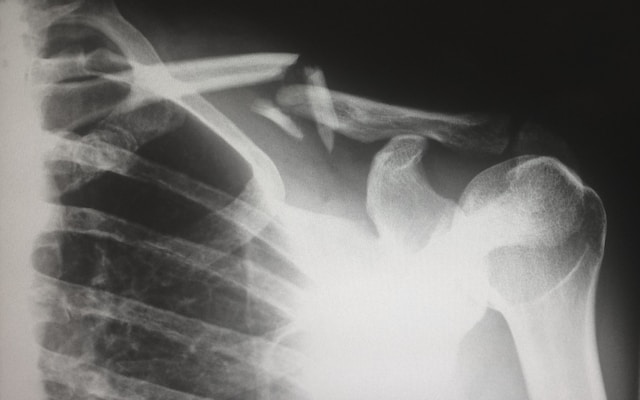Epilepsy is a condition that touches the lives of millions globally. It’s not just about managing seizures; it’s a daily commitment to living well despite uncertainty. Those living in regions like Central Texas have access to specialized care, such as the services one might find through a straightforward search for epilepsy management Austin TX. But beyond the clinic’s doors, management strategies for epilepsy echo through one’s lifestyle, support systems, and how we approach wellness and emergencies.
Table of Contents:
- Epilepsy in Different Life Stages
- Understanding Epilepsy: The Basics and Beyond
- Medication and Epilepsy: Finding the Right Balance
- Lifestyle Adjustments for Epilepsy Management
- Breakthroughs in Epilepsy Treatment
- Technology and Epilepsy: Empowering Self-Care
- Navigating the Healthcare System with Epilepsy
- The Role of Alternative Therapies in Epilepsy Control
- The Importance of Community and Support Groups
- Preparing for Emergencies: First Aid for Seizures
Key Takeaways:
- Comprehensive epilepsy management extends beyond medical treatment, including lifestyle and diet modifications, a supportive environment, and community support.
- New technological solutions offer innovative ways for individuals to monitor and manage their condition effectively.
- Understanding the variances of epilepsy at different life stages can inform tailored management approaches for enhanced quality of life.
Epilepsy in Different Life Stages
The impact of epilepsy varies widely along one’s lifespan. In children, it can influence development and learning, necessitating close collaboration between families, schools, and healthcare providers to optimize the child’s environment for learning and participation. Adolescents and adults must consider how epilepsy affects their education, employment, and social interactions, including the risks associated with driving. Older adults may face distinct challenges, such as the increased likelihood of falls during seizures and the potential for drug interactions with medications for concurrent health issues.
Understanding Epilepsy: The Basics and Beyond
Epilepsy, broadly characterized by a predisposition to generate epileptic seizures, affects people regardless of age, gender, or race. Diagnosing epilepsy often involves capturing a detailed medical history, wherein doctors look for patterns or triggers that could indicate the type without relying solely on witnessing a seizure event. Confirming a diagnosis involves exploring neurological function through varied means like electroencephalograms (EEGs), which record electrical brain activity, and imaging scans like MRI or CT to identify potential structural causes.
Understanding the nuanced presentation of epilepsy is critical. Seizures can vary widely, ranging from focal aware seizures, which may involve subtle movements or sensations, to generalized tonic-clonic seizures with vigorous shaking and loss of consciousness. Recognizing personal seizure triggers — from specific foods, caffeine, and alcohol consumption to external stimuli like flashing lights — empowers individuals to manage and, in some cases, anticipate their seizures better.
Medication and Epilepsy: Finding the Right Balance
The pharmaceutical approach to epilepsy involves a regimen of anti-epileptic drugs (AEDs) designed to reduce seizure frequency and severity. These medications function by stabilizing nerve cell activity in the brain. Every individual’s journey with AEDs is unique; for some, the first medication tried will be effective. For others, a combination of medications may be necessary. In the quest for seizure control, patients must work closely with their healthcare teams to monitor side effects and adjust dosages as necessary, always tailoring the treatment plan to their evolving needs.
Lifestyle Adjustments for Epilepsy Management
Lifestyle choices are integral to controlling seizures. Adequate, high-quality sleep, for instance, can significantly reduce seizure frequency, so practicing good sleep hygiene becomes imperative. Dietary approaches to epilepsy management are also noteworthy. Therapeutic diets, such as the ketogenic diet—a high-fat, low-carbohydrate diet—have been historically used to reduce seizures, especially in children with refractory epilepsy. Nuanced dietary therapies should be designed and monitored by healthcare professionals to ensure they meet the individual’s nutritional needs while aiming to control seizures.
Furthermore, for specific individuals, seizure triggers can be lessened by practicing stress-reduction methods like yoga, meditation, or mindfulness. In building a supportive home and work environment, consider factors like setting up a consistent routine, ensuring safety during a potential seizure, and educating those around you. All these facets contribute to a holistic approach to epilepsy management that empowers the individual, fostering independence and resilience.
Breakthroughs in Epilepsy Treatment
The scope of epilepsy treatment is not static; it evolves as research provides fresh insights into the condition’s underlying mechanisms. Recent avenues in exploration include gene therapies, immunotherapies, and cutting-edge surgical techniques for those who do not respond to traditional treatments. These innovations in treatments offer hope and excitement for a future where epilepsy is not only manageable but potentially curable.
Technology and Epilepsy: Empowering Self-Care
The rise of digital health technology has been a game-changer in epilepsy self-management. Smartwatches and other wearable devices can now detect the onset of seizures and send alerts to caregivers or medical personnel. These tools also enable individuals to track their seizure activity, sleep patterns, and other important health metrics, turning subjective symptoms into quantifiable data. This data is helpful for the individual and can also aid healthcare professionals in tailoring treatment plans.
Navigating the Healthcare System with Epilepsy
While managing epilepsy at home is fundamental, navigating the healthcare system forms the backbone of comprehensive care. It involves understanding epilepsy’s complexities and advocating for oneself within the sometimes confounding realm of medical insurance and healthcare bureaucracy. For best outcomes, it’s crucial to have a well-coordinated care team, including neurologists, epilepsy nurses, therapists, and pharmacists, all working collaboratively to provide optimal patient-focused care. A well-informed patient, bolstered by a reliable support system, can successfully navigate these waters.
The Role of Alternative Therapies in Epilepsy Control
More often, people are turning to alternative therapies to complement their standard epilepsy treatments. While not a replacement for medication or medical advice, therapies such as acupuncture, yoga, and biofeedback have shown promise in helping some individuals with epilepsy find additional relief from their symptoms. They can offer an enhanced sense of well-being and control in a condition frequently characterized by unpredictability. Scientifically evaluating such practices is essential, but anecdotal evidence suggests they can play a supportive role in managing epilepsy.
The Importance of Community and Support Groups
Having a network of people who understand and support those with epilepsy can be profoundly beneficial, whether online or in person. Support groups offer a place to talk about experiences, coping mechanisms, and emotional assistance. These organizations create a dynamic support network that goes beyond traditional medical care by fostering an atmosphere in which people can share their insights and learn from the experiences of others.
Preparing for Emergencies: First Aid for Seizures
Understanding how to respond appropriately to seizures is an essential part of safety for anyone with epilepsy. Family, friends, and colleagues can make a pivotal difference by knowing the correct seizure first aid techniques. This knowledge includes cushioning the person’s head, removing any nearby dangerous objects, gently rolling the person onto their side if vomiting occurs, and never attempting to restrain them or put anything in their mouth during a seizure. After the seizure, it’s essential to provide comfort and reassurance as they regain consciousness. You can live a whole, rewarding life with epilepsy by staying informed, leaning on the support of a healthcare team, and utilizing the wealth of resources and strategies available today.





